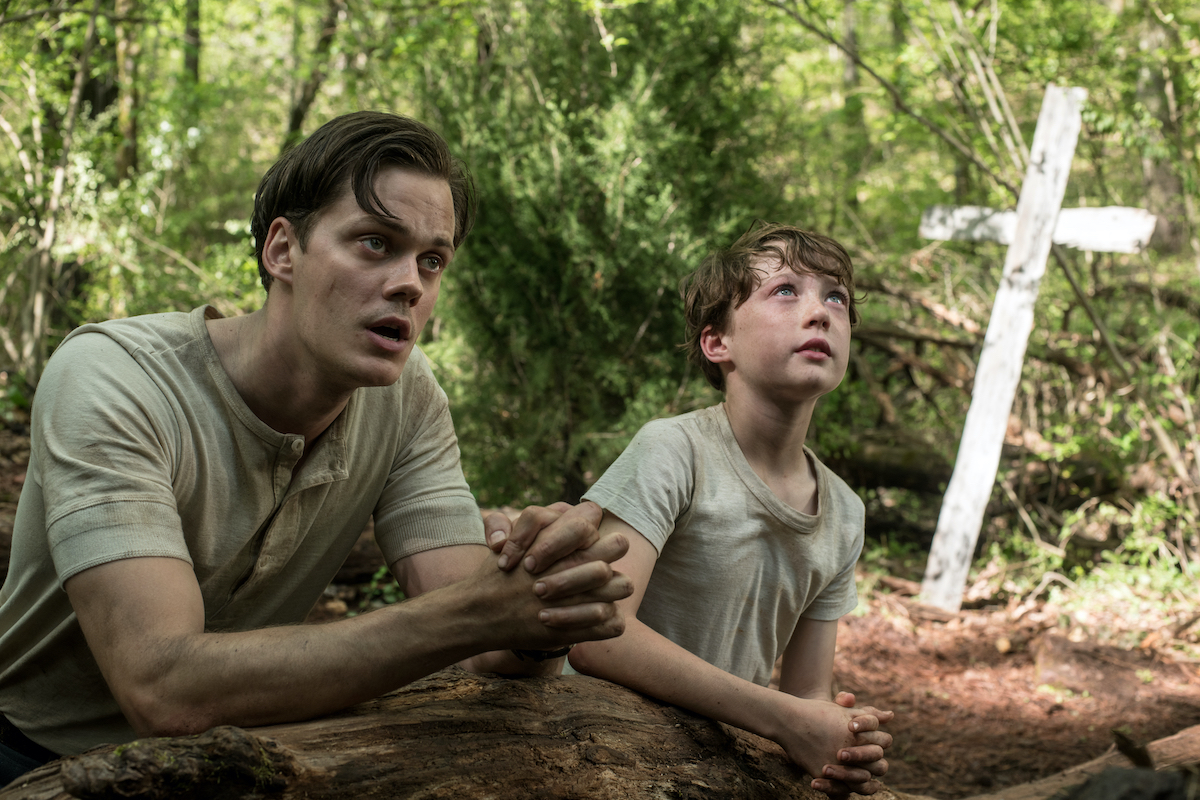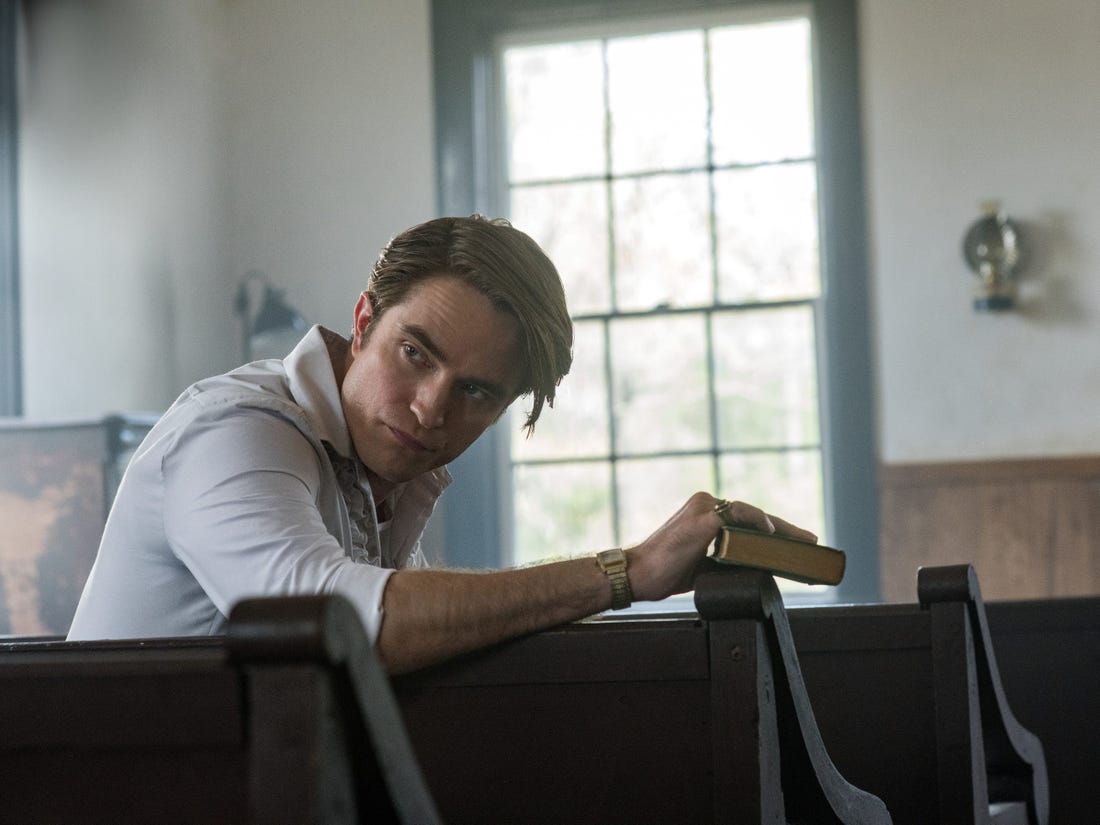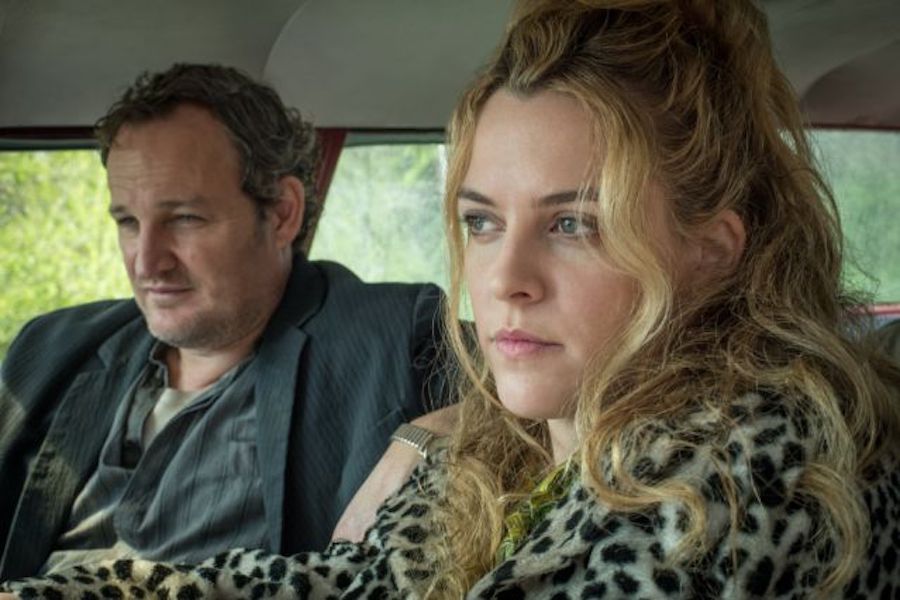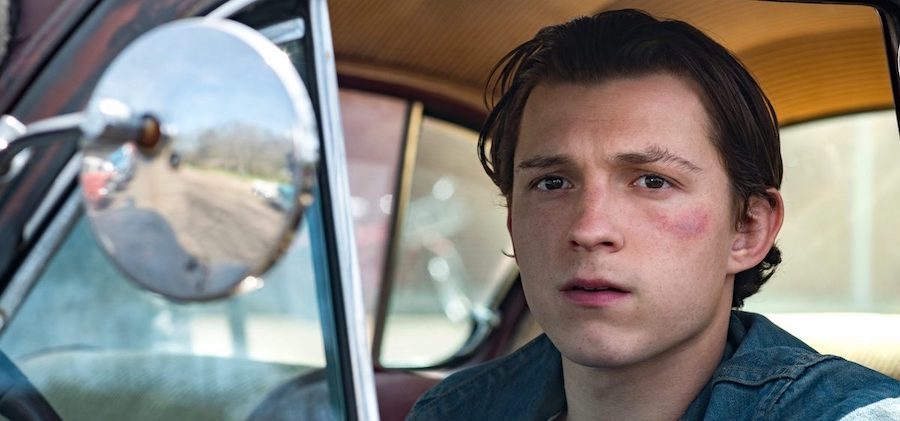‘The Devil All The Time’ is a crime drama that follows the threads of several stories to weave them together in a disturbing and brutal manner. At the center of it is a young man named Marvin Russell, who has been through enough grief and trauma in his life. But now that he has started to come out of it, the arrival of a new preacher in town disbalances all of it. Meanwhile, there is a couple going around the state, picking up hitchhikers, and killing them in lonely, desolate places. The story goes into detail about the backstories of all the characters and creates a riveting tale of family, hatred, religion, and crime. It is so raw and unfiltered in its portrayal of reality that it makes us wonder, is it based on real events? Let’s find out.
Is The Devil All The Time Based on a True Story?
No, ‘The Devil All The Time’ is not based on a true story. It is based on the novel of the same name written by Donald Ray Pollock. While the author didn’t base the story on any real person or incident in particular, he did seek inspiration from the real things around him to write it.
On Knockemstiff and Violence

The story begins in a small town named Knockemstiff, which is a real place where Pollock grew up. Setting the story in the 50s and 60s, he wanted to capture the sense of community that small towns used to have before the Internet and myriad of electronic devices created a distance between neighbors. The interconnectedness displayed between the characters comes from the author’s experience of living in a place where everyone knows everyone and all are connected somehow.
Of a number of other things, violence becomes the major theme of the story where war, murders, revenge, and suicide feature in one arc or another. Explaining this running thread of severity, Pollock explained: “I suppose that I write a lot about violence now because I saw a lot of it when I was a kid. Not murder, but a couple of stabbings and quite a few fistfights, along with men abusing women, stuff like that. Because the threat of violence was always nearby, I paid a lot of attention to it, and as a result it has ended up in my work, just like some writers are influenced by their early experiences with, say, religion or loneliness.”
Despite featuring violence heavily and intimately in the lives of his characters, Pollock never really experienced it first-hand and had to depend on his imagination to write those scenes. “Most of the violence that takes place in the book came from my imagination. I spent a lot of time in bars and houses where it seemed, at least to me, that the threat of something bad happening was always hovering in the immediate background. I guess I’ve always looked upon the world as a somewhat sad and violent place. When you think about the horrible stuff that some people do to each other in the real world–killing their children is just one unfortunate example–I don’t think the violence in my book is really that far-out,” he said.
On Fathers and Religion

Another key factor in ‘The Devil All The Time’ is the father-son relationship, especially Willard and Arvin’s, and this is what drives a good part of the story. The dynamic of the Russell family where the father is a war-hardened, tough guy and the mother is a soft-spoken and gentle soul is somewhat similar to the household Pollock grew up in, though he is not the only child. “Either fortunately or unfortunately for me, I took after my mother. And I believe, when I was a kid, my dad was maybe disappointed in me for not taking after him more. So you know, that’s where I guess part of that comes from. And part of it also comes from Knockemstiff. That’s where I grew up. And I saw a lot of other fathers who were, you know, drinkers and hell-raisers, and they didn’t treat their families very well. So yeah, fathers have a pretty rough time in my work,” he said in an interview on NPR.
Speaking of father figures, religion also gets its fair share of parts to play in the story. With two preachers whose stories don’t end well, we also see the ramifications of their actions rippling through the lives of others. While it might seem like a different arc to the story, Pollock believes that religion and bloodshed have gone hand in hand since times immemorial, and to see the two things converge in ‘The Devil All The Time’ is nothing new. “If you look at history, probably more people have been killed over religion than almost anything else in at least the last two thousand or so years and it’s still going on. It’s a shame that the idea of God or some sort of Creator is so often manipulated to excuse the violence that people inflict upon one another. Being a person who wasn’t raised in any religion (my parents didn’t go to church), it’s hard for me to fathom how people can become so warped in their beliefs. Maybe that’s why I find it interesting, because I view, for example, the basic tenets of Christianity, as just common sense rules to live by, but religious people often see things on an entirely different–sometimes wonderful, but oftentimes insane–level,” he explained.
On Serial Killers

While the entirety of ‘The Devil All The Time’ creates an unsettling feeling for the viewer, who has to go through more than two hours’ worth of death, sadness, and misery, the arc of Sandy and Carl gives a different twist to it. The couple picks up hitchhikers along the way and then murders them, indulging in photoshoots with them, before and after. Explaining their presence in the story, Pollock said that he had conceived the idea with them in mind. “I can’t explain why I began writing about the serial killers. There is just something weirdly fascinating about them. I’ve said this several times, but if you have two newspaper articles on the front page, one about a serial killer and one about a kid who donates his piggy bank to the local homeless shelter or whatever, the majority of people are going to read the serial killer story first,” he said.
The idea of victims being hitchhikers came to him from his days of hitchhiking. He wanted to create a gritty crime story that would not let go of the audience, which is where the idea to get serial killers came from. In combining the two things, he researched the serial killers who killed hitchhikers. He read up on people like John Wayne Gacy and the other killers who had been active during the 60s and 70s. In the end, it just came down to what he thought two crime-crazed people would do in such a situation. “What do they do with these hitchhikers?” He also, purposedly, kept Carl an otherwise lazy person who “sat around the apartment all the time”, and someone who was not particularly good looking or attractive in a way that he could charm his prey. He references the fact that, except perhaps Ted Bundy, serial killers aren’t conventionally handsome or appealing. To not let the popular culture of serial killers in movies and television affect his work, he tried to keep a distance from all of that while working on the book. But one way or another, the things he had previously read or watched certainly rubbed off on him.
Read More: Best Crime Movies Ever Made

